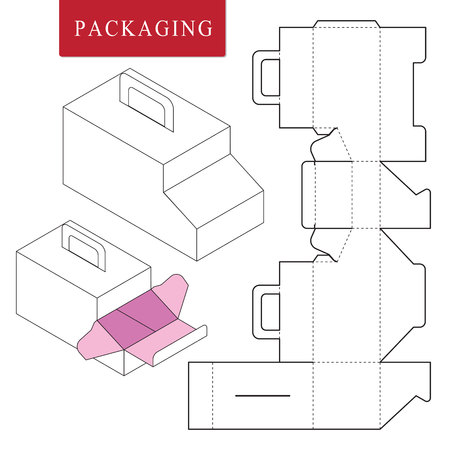1. Understanding Energy-Efficient Lighting Options
When planning lighting for your British garden, it’s essential to consider energy-efficient options that can withstand the UK’s unique weather conditions. In recent years, LED lights have become a popular choice due to their low energy consumption, longevity, and strong performance even in damp or chilly environments. LEDs are available in various styles, from subtle path markers to brighter spotlights, making them versatile for different garden designs. Another eco-friendly choice is solar-powered lighting, which harnesses daylight—even on cloudy British days—to illuminate your outdoor spaces after sunset. Many modern solar lights feature improved battery technology and weatherproof casings, making them reliable throughout the year. By exploring these types of energy-saving lights, you can create a beautiful and practical garden that remains inviting while helping to reduce your carbon footprint and electricity bills.
Planning Your Garden Lighting Scheme
Before installing energy-efficient lighting in your British garden, a well-thought-out plan is essential. Start by observing your garden during different times of the day to understand how natural light interacts with your space. Map out key areas such as entrances, pathways, seating zones, and focal points like water features or flower beds. This helps you decide where lighting will be both practical and decorative.
Assessing Your Garden’s Layout
Take note of the size and shape of your garden. Draw a simple sketch and mark out existing plants, structures, and boundaries. Consider which areas need illumination for safety—such as steps, uneven paths, or entrances—and which spots could benefit from subtle accent lighting to enhance ambience.
Identifying Focal Points and Functional Zones
| Area | Main Purpose | Suggested Lighting |
|---|---|---|
| Pathways | Safe navigation | Bollard or recessed path lights |
| Seating Areas | Relaxation & gatherings | Warm wall lights or string lights |
| Focal Points (e.g., sculpture, tree) | Visual interest | Spotlights or uplighters |
| Entrances & Gates | Security & visibility | PIR motion sensor lanterns |
| Ponds/Water Features | Create atmosphere | Submersible or low-glare spotlights |
Balancing Safety and Aesthetics
A good lighting scheme enhances both safety and the beauty of your garden. Use a mix of functional lighting for high-traffic areas and softer accent lights for mood. Avoid over-lighting; too much can create glare and spoil the tranquil feel of an outdoor space. Instead, focus on layering light at different heights and intensities for depth and interest.
Top Tips for Your Lighting Plan:
- Prioritise energy efficiency: Opt for LED fittings wherever possible.
- Avoid light pollution: Choose fixtures with shields or hoods to direct light downwards.
- Use timers or smart controls: Automate your lights to save energy and add convenience.
- Test before final installation: Temporarily position lights at dusk to see how they impact the space before fixing them permanently.
- Select finishes that suit British weather: Go for robust, weatherproof fittings designed for outdoor use in the UK climate.
A carefully considered lighting plan not only improves safety but also transforms your British garden into an inviting retreat after dark.

3. Choosing Fixtures and Fittings for British Gardens
When planning energy-efficient lighting for your garden, choosing the right fixtures and fittings is essential to ensure both functionality and style. In the UK, weather can be unpredictable, so opt for outdoor lights that are rated for British weather conditions. Look for fixtures with an IP rating of at least IP44 to guarantee resistance to rain and moisture.
Weather-Resistant Choices
Select materials like stainless steel, galvanised metal, or powder-coated aluminium, as they resist rust and corrosion. For classic British gardens, consider lantern-style wall lights or traditional lamp posts which evoke heritage charm while standing up to the elements.
Style Matters: Traditional vs Contemporary
If your garden features a traditional design with stone pathways and established borders, choose fixtures with warm tones and vintage finishes such as brass or aged copper. For contemporary gardens, minimalist fittings in matte black or sleek chrome can create a modern look without overpowering your landscaping.
Complementing Your Garden’s Character
Ensure that your lighting complements existing features—soft uplighting highlights mature trees in cottage gardens, while low-profile bollards line modern patios elegantly. Mixing fixture styles can work if you maintain a consistent finish or colour palette throughout your space.
Practical Tips for Installation
Always position fixtures to minimise light pollution and avoid glaring into neighbours’ windows. Use LED bulbs for energy efficiency and longevity. Finally, consider smart controls so you can easily adjust brightness levels according to the season or occasion.
4. Installation Best Practices
Proper installation of energy-efficient lighting in British gardens is essential for both safety and performance. Before you begin, consider the unique conditions of your outdoor space, and always prioritise safe practices that comply with UK regulations.
Safe Installation Methods
Outdoor electrical work must be weatherproof and robust to withstand the British climate. Use IP-rated fixtures and fittings suitable for external use, and ensure all connections are adequately sealed against moisture. Always switch off power at the mains before starting any installation work.
Wiring Considerations
| Factor | Recommendation |
|---|---|
| Cable Type | Use armoured or weather-resistant cables (e.g., SWA) for underground or exposed runs. |
| Depth for Underground Cables | Bury cables at least 450mm below lawns or flowerbeds, as per BS 7671 standards. |
| Protection | Install residual current devices (RCDs) on all outdoor circuits to enhance safety. |
| Junction Boxes | Select waterproof junction boxes designed for garden use, rated at least IP66. |
DIY vs. Hiring a Qualified Electrician
While some garden lighting projects can be tackled as DIY jobs—such as solar lights or plug-and-play low-voltage systems—any hardwired installations should comply with Part P of the UK Building Regulations. If your project involves new wiring, connection to the household mains, or complex layouts, it is safer and often legally required to hire a qualified electrician registered with NICEIC or a similar body.
| Task Type | DIY Suitable? | Electrician Needed? |
|---|---|---|
| Solar stake lights or plug-in festoon lights | Yes | No |
| Low-voltage LED kits (with transformer) | Yes (if pre-wired) | No (unless modifying wiring) |
| Permanent mains-powered lighting circuits | No (unless certified competent) | Yes – must comply with Part P regulations |
| Underground cabling or new sockets/outlets outdoors | No | Yes – mandatory under UK law |
Key Takeaway:
If in doubt, always consult a professional to ensure safety and legal compliance. Proper installation not only protects you and your property but also ensures your garden lighting remains reliable and efficient throughout the year.
Eco-Friendly Tips and Maintaining Your Lighting
To make the most of your energy-efficient garden lighting in the UK, it’s important to combine clever planning with simple eco-friendly habits. Here are some key tips to help you maximise efficiency, reduce waste, and keep your outdoor lights working beautifully all year round.
Maximise Efficiency with Thoughtful Placement
Start by placing lights only where they’re truly needed—highlighting paths, steps, or focal points like a favourite tree or sculpture. Avoid over-lighting, as less is often more for both aesthetics and energy savings. Choose LED fixtures certified for outdoor use; these not only consume less power but also last much longer, reducing replacement costs and waste.
Use Timers and Motion Sensors
Timers and motion sensors are smart investments for British gardens. Set timers to switch lights on at dusk and off at bedtime, so you never leave them running all night. Motion sensors offer extra security while saving energy—they’ll only activate when someone walks by. For best results, select models designed for the UK’s weather, ensuring reliable performance through rain or frost.
Maintaining Your Lighting in All Seasons
The UK’s changing weather can be tough on garden lighting. Regularly check all fixtures for water ingress, corrosion, or damage after storms and throughout the winter months. Clean lenses gently to remove dirt or algae that might dim your lights. Replace any faulty bulbs promptly with new energy-efficient options. Every spring and autumn, inspect wiring and connections to prevent issues before they start.
Sustainable Cleaning and Care
When cleaning your lights, use mild soaps and reusable cloths rather than harsh chemicals or disposable wipes. This small change helps protect local wildlife and keeps your maintenance routine green.
A Beautifully Lit Garden, Year-Round
By combining smart technology with regular care, you’ll enjoy a welcoming garden that looks stunning after dark—while keeping your energy bills down and supporting a greener Britain.
6. Enhancing Atmosphere and Security
Thoughtful lighting not only transforms the look of your British garden, but also creates a welcoming atmosphere while improving security. When planning your garden lighting, consider both practical needs and the mood you want to set for outdoor gatherings or quiet evenings at home.
Strategic Lighting Placement
Begin by identifying key features in your garden such as paths, patios, seating areas, and architectural elements. Use low-level lights along walkways to guide guests safely and highlight boundaries. Uplighting trees or stone walls can create dramatic focal points, while wall-mounted lights near entrances provide safe access and deter intruders.
Layered Lighting for Versatility
Combine different types of lighting to achieve layered effects. For instance, use spotlights to accentuate specific plants or sculptures, and soft ambient lighting around seating areas for a cosy feel. Motion-activated lights by gates or garages offer extra security without overwhelming your garden with constant brightness.
Choosing the Right Colour Temperature
The tone of your lighting has a significant impact on the atmosphere. Warm white (around 2700K–3000K) creates a relaxed and inviting glow that suits most British gardens, especially for entertaining. Cooler tones (4000K and above) are ideal near driveways or sheds where clarity is important for safety and security. Mixing these temperatures thoughtfully can balance ambience with practical illumination.
Energy-Efficient Solutions
Opt for LED fixtures throughout your garden, as they provide reliable brightness with minimal energy consumption. Solar-powered options are particularly suited to the UK’s longer summer evenings and reduce the need for extensive wiring, making them perfect for environmentally conscious homeowners.
By blending aesthetic considerations with safety requirements, you can create an outdoor space that feels both secure and inviting—a true extension of your British home.


